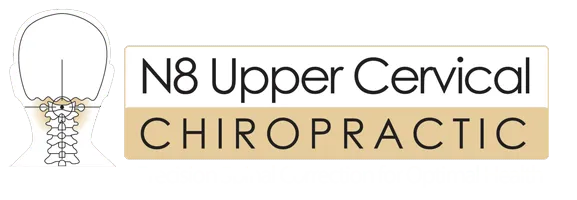 If you have never experienced migraines, you may be under the impression they are just really bad headaches. Let us set the record straight. This is simply not true. Migraines are actually not headaches at all. In fact, they are neurological in origin and a headache is just one symptom – the most common one – that is associated with migraines. Did you know you do not have to have a headache to have a migraine? You may have some of the other symptoms – such as nausea, vomiting, sensitivity to light and sound, dizziness, and visual disturbance – but no headache. This is pretty rare but it does happen.
If you have never experienced migraines, you may be under the impression they are just really bad headaches. Let us set the record straight. This is simply not true. Migraines are actually not headaches at all. In fact, they are neurological in origin and a headache is just one symptom – the most common one – that is associated with migraines. Did you know you do not have to have a headache to have a migraine? You may have some of the other symptoms – such as nausea, vomiting, sensitivity to light and sound, dizziness, and visual disturbance – but no headache. This is pretty rare but it does happen.
Migraines are pretty common in today’s stress-ridden world. Around the globe, 1 billion people suffer from migraines. Women are three times more likely to get migraines than men, and migraines are mostly seen in the age range of 25 to 55. Almost 90 percent of those with migraines also have family members with migraines. Another astonishing fact is as many as 4 million people have chronic daily migraines, meaning they suffer at least 15 days out of the month.
How Are Migraines Different from Other Headaches?
As noted earlier, migraines do not always have a headache involved. Let’s take a look at some common headaches and what their symptoms are so it is easier to figure out what you may be experiencing when you have a headache.
It is important to note that sometimes a headache can indicate there is another health problem going on and should not always be taken lightly. These would be referred to as secondary headaches, or headaches caused by another medical condition. These may include sinus infections, strokes, or neck injuries. A primary headache is one that comes about anhttps://www.sott.net/article/313482-The-signs-and-symptoms-od is not brought on by any other condition.
To learn more about the connection between head and neck injuries and headaches download our free e-book Natural and Drug-Free Ways to End Your Migraines by clicking the image below.
The brain itself does not sense pain. When headaches happen, they involve the tissue covering the brain, the attaching structures at the base of the brain, and muscles and blood vessels around the scalp, face, and neck. Here are some common headache types and what each one is known for:
A sinus headache: Many primary headaches – even migraines – are often misdiagnosed as sinus headaches. The symptoms are:
They occur in the front of the face – around the eyes, across the cheeks, over the forehead
Usually mild in the morning and get worse as the day progresses
Fever
Runny nose
Congestion
Feeling of illness
They differ from migraines in that they are spread over a larger area of the head and often are not accompanied by visual changes. They can coexist with migraines, however.
A TMJ headache: Temporomandibular joint (TMJ) headaches are often caused by clenching the jaw or grinding the teeth. Known for:
Pain in the jaw when chewing
Jaw movement is restricted or noisy
Pain may be felt in the ear, cheek, temples, neck, or shoulders
A tension headache: Sometimes called a muscle contraction headache, this is the most common headache. It is felt in the forehead, back of the head and neck, or both areas and is accompanied by:
A tight feeling as if the head were in a vise
Soreness in the shoulders or neck
A sensitivity to light more than usual, even between attacks
Visual disturbances
Can last for minutes or days
They are different from migraines in that they do not cause nausea or limit your activities. The symptoms are not as severe as migraine symptoms.
A neck headache: This is called a cervicogenic headache and is a secondary headache disorder as it is caused by a problem in your neck joint. Thankfully, fixing the problem in your neck can also alleviate your headache. It is estimated these headaches make up from 4 to 22 percent of all headaches. A dysfunction in any of the musculoskeletal and neurovascular structures of the neck can trigger pain signals that travel to the brainstem and are interpreted by the brain as a headache. The most common cause of neck headaches is a problem in the upper three neck joints. They may be too stiff, move too much, or be locked in an abnormal position. These headaches can be relieved instantly when this is corrected.
A cluster headache: One of the most painful headaches, these occur in periodic cycles of attacks of headaches. They may be episodic or chronic. Cycles of headaches that occur daily or near-daily may last a week or a year. During an active cycle, you may experience one or more bouts a day or as few as one every other day. The attacks themselves are brief but extremely painful. These bouts can be followed by headache-free periods that last for 14 days. Symptoms are:
Severe, stabbing, and boring pain centered in one eye
Pain may occur above the eye, near the temples, or on one side of the head
Sensitivity to light and sound
Auras
Rarely nausea and vomiting
Finding Relief for Migraines and Other Headache Types
Migraines have been linked with a misalignment in the bones of the neck, particularly the C1 and C2 vertebrae. If these bones are out of alignment, they put pressure on the brainstem and cause it to send improper signals to the brain. This can lead to migraines and other kinds of headaches.
Here at N8 Upper Cervical, we use a gentle method to encourage the bones to move back into place without the need for popping or cracking the spine. This is a natural process that helps the adjustment stay in place longer than forcing it into place. We have seen many positive results with our migraine patients. Some see their migraines improve greatly, while others see migraines go away and not return.
To schedule a consultation with N8 Upper Cervical Chiropractic clinic, call (02) 8553-6218 or just click the button below.
If you are outside of the local area, you can find an Upper Cervical Doctor near you at www.uppercervicalawareness.com.


